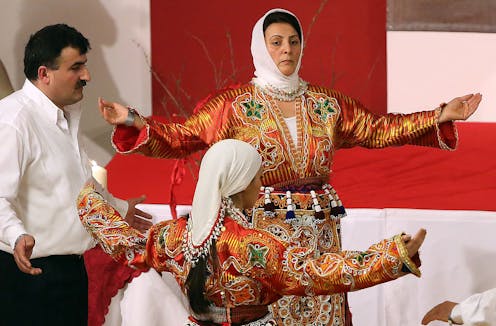Source: The Conversation – France (in French) – By Mathieu Plane, Economiste – Directeur adjoint au Département Analyse et Prévision OFCE, Sciences Po
Mardi 15 juillet, le premier ministre François Bayrou annoncera son plan pour réduire les dépenses publiques et stabiliser la dette. Cela devrait se faire sans augmentation d’impôts, même s’il pourrait y avoir « des efforts particuliers » demandés a indiqué le premier ministre sur LCI le 10 juillet.
Nous avons demandé à Mathieu Plane, économiste à l’OFCE, d’analyser la situation et les mesures envisagées. Au-delà de la situation financière de la France, la situation politique doit être étudiée de près car elle pourrait enclencher une crise financière qui pourrait pourtant être évitée. Parmi les questions abordées, il évoque l’impact des mesures annoncées sur les plus fragiles ou les aides aux entreprises.
The Conversation : Le premier ministre a annoncé préparer un plan d’économies budgétaires pour réduire le déficit. Le montant de ce plan serait de 40 milliards. D’où vient ce chiffre ? À quoi correspond-il ?
Mathieu Plane : En adhérant à l’Union européenne, la France s’est engagée à respecter certaines règles. Ainsi, le déficit public doit baisser conformément à la trajectoire voulue par la Commission européenne. Pourtant, ces 40 milliards – soit 1,3 % du PIB – représentent davantage que ce demande la Commission, soit 0,7 point de PIB.
Ceci rappelé, ce ne sont pas vraiment 40 milliards d’ajustements structurels. Un quart, soit 10 milliards, correspond à la compensation des mesures exceptionnelles prises en 2025 pour un an (la contribution exceptionnelle sur les grandes entreprises et les hauts revenus). Donc, pour stabiliser le déficit à son niveau actuel, il faut commencer par trouver dix milliards de baisses de dépenses. Il « reste » 30 milliards d’efforts budgétaires, soit 1 point de PIB.
Sur ce point, il y a un débat qui monte, qui peut sembler technique, mais qui est très concret. Quand vous voulez réduire un déficit, vous avez deux leviers : baisser les dépenses publiques ou augmenter les recettes. Si vous annoncez une hausse d’impôts, c’est assez simple de calculer l’impact que cela aura. Mesurer la baisse des dépenses est plus compliqué car tout dépend du point de comparaison, c’est-à-dire de la trajectoire de référence. Quand vous dites que vous réduisez de 30 milliards la dépense publique, c’est par rapport à une trajectoire qui aurait eu lieu si aucune mesure n’avait été prise et que l’on n’observera jamais par définition. Ainsi, les annonces de 30 milliards d’économies ne signifient pas que les dépenses vont baisser de 30 milliards en valeur absolue. Cette discussion avait eu lieu lors du budget censuré finalement de Michel Barnier. Le reférentiel de calcul est donc important pour chiffrer correctement les économies en dépense et il faut être attentif à cela.
Comment procédez-vous dans vos prévisions ?
M.P. : Dans nos analyses, pour mesurer l’effort budgétaire du côté de la dépense, nous regardons l’évolution comparée des dépenses publiques et du PIB potentiel. Pour réaliser de véritables économies budgétaires, il faut qu’à fiscalité constante, la dépense publique augmente moins vite que le PIB potentiel, qui croît d’environ 3 % en valeur par an. C’est quelque chose de très mécanique, puisqu’on parle d’un ratio : si le numérateur augmente moins vite que le dénominateur, le taux diminue !
Et cela concerne l’ensemble des dépenses publiques, c’est-à-dire les dépenses de l’état (35 % du total environ), les collectivités locales (20 %) et toutes les dépenses de protection sociale (santé, retraites, famille…) soit 45 % du total. Pour faire des économies structurelles, il faut que tout cela augmente de moins de 3 % en valeur. L’enjeu n’est pas tant de baisser la dépense publique que de la faire croître moins vite que le PIB potentiel.
Du lundi au vendredi + le dimanche, recevez gratuitement les analyses et décryptages de nos experts pour un autre regard sur l’actualité. Abonnez-vous dès aujourd’hui !
Pourquoi n’essaie-t-on pas d’augmenter le PIB potentiel plutôt que de réduire les dépenses ?
M.P. : C’est un argument important et il est d’autant plus facile de faire des économies structurelles et se désendetter que la croissance potentielle est élevée. Mais agir sur la croissance potentielle ne se fait pas du jour au lendemain. C’est un travail de longue haleine pour améliorer la productivité de long terme d’une économie. Cela passe par des politiques qui soutiennent l’innovation, la R&D, l’émergence de nouvelles industries, des investissements importants dans l’éducation ou la formation, les infrastructures… Ces politiques d’investissements importants ne portent pas leurs fruits immédiatement.
Et le risque d’ailleurs, pour des raisons budgétaires, c’est de couper dans ses investissements qui ont peu d’effets à court terme mais dont les effets sont cruciaux à long terme. France 2030 ou les fonds pour la transition écologique en sont de bons exemples. Le but est donc de limiter la croissance des dépenses sans réduire la croissance potentielle. Mais le risque, en baissant trop fort les dépenses, c’est d’avoir un impact très négatif sur la croissance et, donc, un cercle vicieux s’enclenche. Le PIB baissant à la suite de la réduction des dépenses en année T, il faut baisser encore plus les dépenses en T+1 pour réduire le déficit. Là, c’est la double peine pour l’économie.
À lire aussi :
Budget 2025 : « Le gouvernement Barnier est entre le numéro d’équilibriste et l’intervention d’urgence des pompiers »
Y’a-t-il une urgence à réduire le déficit en soi ? Ou faut-il le faire pour contenir l’évolution de l’endettement public ?
M.P. : Le déficit ponctuel ce n’est pas très grave, s’il est maîtrisé. Ce qu’il faut à tout prix protéger, c’est notre capacité à emprunter aux taux actuels. Et pour cela, il faut une trajectoire crédible de réduction des déficits et de stabilisation de la dette à un certain horizon tout en limitant les effets négatifs sur la croissance.
La crainte pourrait venir des investisseurs qui achètent de la dette française et donc qui prêtent à l’État français. S’ils commencent à s’inquiéter quant à la capacité de la France à redresser ses comptes publics et à stabiliser sa dette, en points de PIB, ils risquent de demander des taux d’intérêt plus élevés, d’où une charge de la dette en hausse qui peut être très vite problématique. Il peut y avoir ce qu’on appelle un effet boule de neige de la dette quand les taux d’intérêt deviennent supérieurs à la croissance. Or, avec la remontée des taux d’intérêt, nous sommes dans une zone dangereuse contrairement à une grande partie de la décennie des années 2010 où les taux d’intérêt étaient très faibles, inférieurs à la croissance. Aujourd’hui, la croissance potentielle n’est pas élevée et ne va pas augmenter dans les années à venir et les taux d’intérêt sont supérieurs à 3 %. Le risque pour la France c’est plus la situation italienne que grecque comme on l’entend parfois dire. L’Italie a connu cette situation où la croissance était largement inférieure à ses taux d’intérêt. Cela veut dire qu’il faut avoir d’importants excédents budgétaires primaires (l’écart entre les dépenses et les recettes hors charges d’intérêt) pour stabiliser la dette et cette situation mange toute marge de manœuvre budgétaire, notamment pour investir.
La crise la plus dangereuse est-elle la crise financière potentielle ou la crise politique que nous connaissons avec une assemblée sans majorité claire ? Le risque n’est-il pas que la crise politique finisse par déboucher sur une crise financière faute de mesures difficiles mais pas fondamentalement impossibles à prendre ?
M.P. : Sur ce dernier point, je vous suis. Il y a certes une crise budgétaire inquiétante mais très particulière : la France est le seul pays concerné, alors que la crise des dettes souveraines du début des années 2010 impliquait l’Europe, et en particulier les pays d’Europe du Sud. Ce n’est pas une crise budgétaire européenne mais française et cela veut dire que tous les pays européens ne vont pas couper les vannes en même temps, l’Allemagne annonce même un gigantesque plan de relance… ce qui va être bon pour nos exportations.
Pour revenir à la situation française, l’écart de taux avec l’Allemagne sur les emprunts publics à 10 ans est passé de 0,5 à 0,7 depuis la dissolution, mais il faut noter que l’économie française ne s’est pas effondrée car les fondamentaux structurels de la France sont solides et qu’on possède notamment beaucoup d’épargne. S’il y avait une majorité claire, il serait possible de développer un plan de redressement budgétaire réfléchi et étalé sur plusieurs années à même de rassurer nos prêteurs et de dépasser la crise budgétaire.
Cet hiver, qui votera à l’assemblée des mesures impopulaires, à 18 mois d’une élection présidentielle ? Car, pour commencer, nous avons parlé des 40 milliards d’euros à trouver, mais ce sont environ 100 milliards à dégager d’ici à la fin de la décennie. Pour rendre acceptable ce redressement des comptes publics, il faudrait une stratégie claire de moyen terme qui lisse les efforts sur plusieurs années et qui vise à limiter les effets négatifs sur l’économie et le social. Mais pour cela, il faudrait une assise politique solide.
Un rapport sénatorial sur les aides aux entreprises révèle une absence de visibilité des dépenses et de leurs effets. Les dépenses sont-elles hors de contrôle ?
M.P. : De nombreuses mesures budgétaires pérennes ont été prises sans évaluation préalable. La situation budgétaire dont nous venons de parler résulte largement de l’accumulation de mesures dont le financement a été ignoré et les effets sur la croissance surestimés. Depuis la crise des gilets jaunes et la pandémie et son « quoi qu’il en coûte », il y a eu une multitude de mesures prises (renoncement à la taxe carbone, suppression de la taxe d’habitation pour tous, défiscalisation des heures supplémentaires, baisse des impôts sur la production en même temps que celle de l’impôt sur les sociétés…) sans que jamais ne soit posée la question du financement budgétaire de ces mesures. Certaines de ces mesures sont bonnes assurément mais les effets sur la croissance n’ont pas été suffisants pour qu’elles soient auto financées. Nous sommes arrivés en bout de course et c’est désormais l’heure des comptes avec un trou budgétaire à combler. La politique de l’offre a en partie obtenu des résultats sur la croissance, l’emploi et la compétitivité mais à quel prix. Ne pouvait-on pas obtenir des résultats similaires à moindre coût ? La question n’est jamais posée. Une analyse claire des mesures prises dans le passé est plus que nécessaire avant d’aller plus loin.
Un rapport de l’Insee indique que le taux de pauvreté n’a jamais été aussi élevé et atteint 15 % de la population. La politique de réduction des dépenses peut-elle se faire sans aggraver leur situation ni pousser davantage de personnes dans la pauvreté.
M.P. : La situation dans laquelle nous entrons va être difficile, très difficile socialement. Le retournement du marché du travail est enclenché avec une remontée du chômage. Ce retournement devrait se prolonger sous l’effet de la réduction budgétaire et la faible croissance… d’autant plus si certaines des mesures budgétaires ciblent les politiques de l’emploi comme l’apprentissage. De plus, une année blanche sur les prestations sociales réduit en premier lieu le niveau de vie des ménages les plus modestes qui bénéficient de ces prestations.
ll faut donc trouver un chemin de crête avec des mesures budgétaires qui ne grèvent pas trop la croissance et n’alourdissent pas la problématique du chômage et des inégalités. Mais cela nécessite de développer une vision stratégique macroéconomique et budgétaire sur plusieurs années qui sorte des logiques comptables et politiques de court terme. Mais là, nous revenons au problème politique majeur que nous affrontons depuis la dissolution.
Propos recueillis par Christophe Bys
![]()
Mathieu Plane ne travaille pas, ne conseille pas, ne possède pas de parts, ne reçoit pas de fonds d’une organisation qui pourrait tirer profit de cet article, et n’a déclaré aucune autre affiliation que son organisme de recherche.
– ref. « La crise politique est plus inquiétante pour l’économie française que la crise budgétaire seule » – https://theconversation.com/la-crise-politique-est-plus-inquietante-pour-leconomie-francaise-que-la-crise-budgetaire-seule-260942









